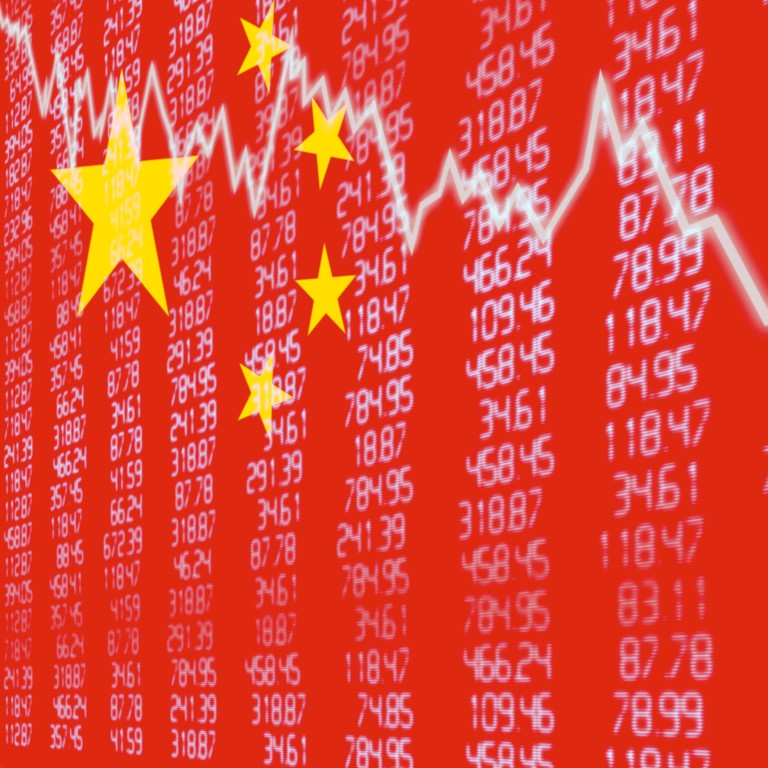
Chinese stocks set for record third year of losses as post-Covid recovery sputters, foreign funds flee
- The CSI 300 Index has dropped 14 per cent year to date, adding to a 22 per cent plunge in 2022 and a 5.2 per cent decline in 2021
- The worst for Chinese stocks is likely over and they are due for a rebound, according to global investment banks
China’s stocks are heading for an unprecedented third straight year of losses, as the world’s second-largest market reels from a slew of setbacks ranging from flopped reopening trade to faltering growth and unprecedented foreign outflows.
The CSI 300 Index has dropped 14 per cent so far this year, adding to a 22 per cent plunge in 2022 and a 5.2 per cent decline in 2021. The losing streak would be the longest on record for the gauge that tracks the biggest stocks on the Shanghai and Shenzhen exchanges.
This year has turned out to be topsy-turvy for traders, with the markets getting off to a strong start on sky-high expectations for the market after China scrapped three years of stringent Covid-19 curbs. Sentiment deteriorated after the initial excitement, as optimism about a strong post-pandemic recovery did not pan out as expected amid a continuing slump in the property market, Beijing’s underwhelming stimulus measures and aggressive interest-rate hikes in the US.
“Investors have been through a tough year in 2023, as weakening consumer spending and the downturn in the property market both exceed estimates,” said Dai Ming, a fund manager at Huichen Asset Management in Shanghai. “The geopolitical tensions coupled with monetary policy tightening in the US have added fuel to the sell-offs.”
Foreign investors’ selling has played a key role in exacerbating sentiment. Global fund managers are disappointed by Beijing’s growth-stabilising measures and have been pulling out to park money in high-yielding assets in the US and other Asian markets such as Japan and India.
They have sold a combined 31.6 billion yuan (US$4.4 billion) of onshore stocks through the exchange link programme so far in December, on course for a record five-month streak of outflows, according to Hong Kong exchange data.
Enduring pain: 90% of China equity funds suffer as US$1 trillion of value erased
A slew of market-rescue measures by the government has done little to stem the slide.
China’s US$1.24 trillion sovereign wealth fund increased its stake in the nation’s four big state-owned banks for the first time since 2015 and bought an unspecified amount of exchange-traded funds. The stock-market regulator tightened the pace of new-share offerings to cut stock supply, and the finance ministry lowered the stamp duty on stock transactions.
Seven out of the 10 industry groups on the CSI 300 are set to post annual losses, with industrial and healthcare stocks sliding at least 16 per cent, the worst-performing sectors. The best-performing industry is energy, with constituents gaining an average of 12 per cent, thanks to the rally in oil giants PetroChina and China Petroleum and Chemical Corp (Sinopec).
The CSI 300 is now valued at 12.1 times estimated earnings for 2023, below the 10-year average of 14.9 times, according to Bloomberg data.
Beijing’s star rises with US$17 billion pop in annus horribilis for China stocks
While China’s growth outlook may not improve significantly in 2024, the worst for stocks may have already been priced in and they are due for a comeback, according to global investment banks.
UBS predicts a 15 per cent gain in the MSCI China Index of both onshore and offshore stocks next year, which will be driven by cheap valuations, low investor positioning, more policy support and an improvement in corporate earnings.

A dip in growth in early 2024 will probably prompt Beijing to roll out more meaningful measures to support growth, such as helping troubled developers to deliver unfinished homes, cleaning up local governments’ financial stress and ramping up fiscal spending, according to Nomura Holdings.
Further loosening of monetary policies is on the cards after weak inflation data in November, which will probably install some confidence on the market in the near term, according to David Chao, a Singapore-based strategist at US asset-management firm Invesco.
“A cut in the policy rate and reserve requirement ratio could be in the offing,” he said. “This could be the near-term positive catalyst that China markets are looking for.”

